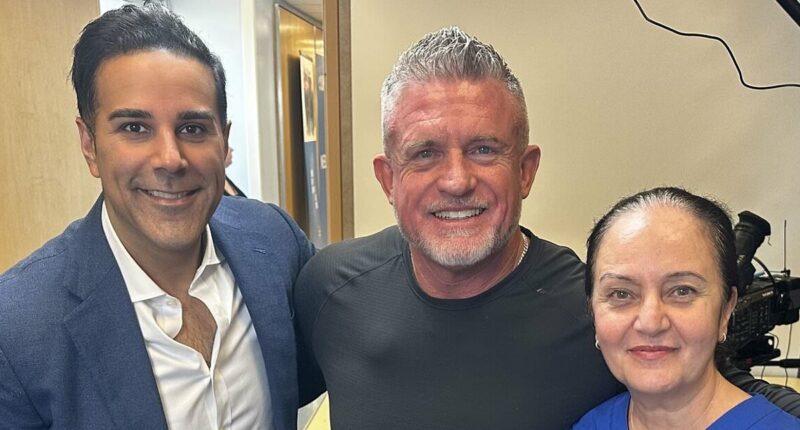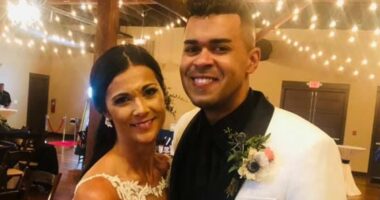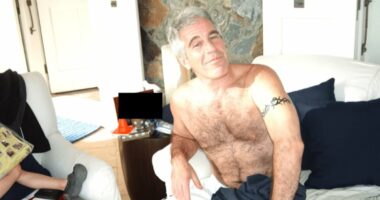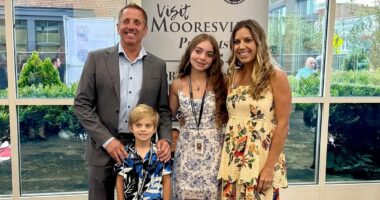Share this @internewscast.com
For Kirk Neff, a Canadian cameraman whose career has taken him from capturing the likenesses of prime ministers to the grandeur of princes, even the everyday act of lifting a coffee cup had become an arduous task. This struggle continued until a fortuitous meeting with a neurosurgeon brought unexpected hope with the simple promise: “I can fix that.”
Neff was diagnosed at the tender age of 16 with a condition that would over time severely impact his life and work. Known as essential tremor, this neurological disorder causes involuntary shaking, turning routine tasks into formidable challenges. For Neff, the effort required to hold a coffee cup or maintain a steady camera was immense, each movement demanding his complete concentration.
The turning point in Neff’s journey came during a seemingly routine assignment. While attaching a microphone to Dr. Mojgan Hodaie at Toronto Western Hospital, the neurosurgeon observed his tremors. In that moment, she recognized his condition and offered a lifeline that Neff hadn’t anticipated—surgery that could potentially change his life.
This chance encounter led to Neff undergoing the first of two awake brain surgeries, a critical step in his effort to regain control over his life and preserve his career. The initial operation focused on his left hand, and to his relief, it now remains perfectly still, defying the tremors that once dominated his daily existence.
Neff’s story is not an isolated one. Essential tremor affects an estimated 1 million Canadians and 10 million Americans, yet its precise origins remain a mystery. For those like Neff, the condition can be life-altering, highlighting the profound impact medical intervention can have on quality of life and professional pursuits.
Approximately 1 million Canadians and 10 million Americans have essential tremor, the exact cause of which is unknown.
One leading theory suggests essential tremor arises from faulty communication between the cerebellum, the part of the brain responsible for muscle coordination, and other brain regions.
In many cases, the condition is inherited. A child of a parent with essential tremor has a 50 percent chance of inheriting the gene responsible for it.

Cameraman Kirk Neff suffered from a debilitating shaking condition for two decades, until a chance encounter with a neurosurgeon told him, ‘I can fix that’
Neff has experienced tremors since he was 16. He told CTV news that he was prescribed medication to alleviate the shaking, ‘and it never really worked.’
He said: ‘It takes a lot out of you. So not only are you shaking, but your mind’s working 24/7 … not only on what you’re doing, but working on trying to keep your hands straight.’
Neff’s colleague Omar Sachedina, chief news anchor and senior editor of CTV National News, first wrote about his colleague’s tremors this week.
Years ago, Sachedina attributed Neff’s shaking to overcaffeination.
But they only worsened as he got older, which is typical in cases of essential tremor.
Sachedina said: ‘I always noticed when Kirk had to put a microphone on a guest, he was always prepared with a few jokes to distract them from what was happening with his hands.
‘On our car rides back to the newsroom, Kirk acknowledged [his condition], but he never understood why they were happening.’
Two weeks after meeting Dr Hodaie for the first time, Neff was in her office discussing his upcoming surgery.
![During a five-hour surgery, doctors implanted a device that delivers electrical impulses to calm his tremors. The system, known as deep brain stimulation, can be adjusted by the patient using a smartphone app. He is pictured with his colleague Omar Sachedina [left] and Dr Mojgan Hodaie [right]](https://i.dailymail.co.uk/1s/2025/11/06/19/103594821-15258691-image-a-30_1762456582101.jpg)
During a five-hour surgery, doctors implanted a device that delivers electrical impulses to calm his tremors. The system, known as deep brain stimulation, can be adjusted by the patient using a smartphone app. He is pictured with his colleague Omar Sachedina [left] and Dr Mojgan Hodaie [right]
The plan was to implant a small, pin-like electrode in a specific part of the brain to target the nerves causing his tremors, and then connect it to a pacemaker-like device in his chest.
This treatment, known as deep brain stimulation, delivers electrical impulses that patients can adjust via a phone app to control the shaking.
When the day arrived, Neff described doctors placing a stabilizing brace around his skull before laying him down. They worked behind his head, the top of which was cordoned off with a blue sheet, while he and the staff faced an array of monitors displaying real-time data.
As the tip of the electrode got closer to its target, the Ventral Intermediate Nucleus (VIM) of the thalamus, Neff said: ‘I just remember hearing this sound… it’s almost like a static sound.’
As the electrode hit its target, it stimulated the adjacent brain area, the medial geniculate body (MGB), which is the brain’s primary auditory relay station, creating the static sound that came through the monitors.
‘And as they got closer and closer to the tremors [with the electrode], it got quieter and quieter, the sound,’ he said.
The lack of sound indicated that the electrode tip was now perfectly positioned within the exact tiny cluster of neurons within the VIM, having moved from the nearby auditory area.
The test stimulation delivered from this spot was the signal that steadied the overactive nerves, silencing the tremor.

With a second surgery scheduled to finally calm the tremors in his right hand, Neff feels he’s getting a fresh start. He recalled emotionally telling his surgeon, ‘You saved my life. You saved my career’
He added: ‘So at one point, I just remember it was so quiet in that surgery room that all I heard was, “ok, we got it.”‘
In an interview after the procedure, Neff demonstrated the life-changing results. Lifting his left hand in the air, he kept it perfectly steady. His right hand, which used to be his ‘good hand,’ shook vigorously. His next surgery will stop the tremors there, too.
He said: ‘As soon as they turned on the pacemaker [the electrical stimulations through the electrode], my body just went “whoo,” just relief, a sense of relief after 30-some odd years.’
The procedure took approximately five hours in total.
Essential tremor typically presents with several key signs, most noticeably involuntary shaking in the hands, which can make simple tasks, such as writing or using tools, challenging.
The condition may also cause shakiness or a quiver in the person’s voice, uncontrollable head nodding, and, in rare cases, tremors in the legs or feet.
Deep-brain stimulation is highly effective in treating essential tremor, with total tremor scores showing a 65 percent improvement at six months.
Neff will soon undergo a second surgery to target the nerves causing tremors in his right hand.
He said: ‘It’s a new beginning. I remember crying and I told the doctor, “You saved my life. You saved my career.”‘

















